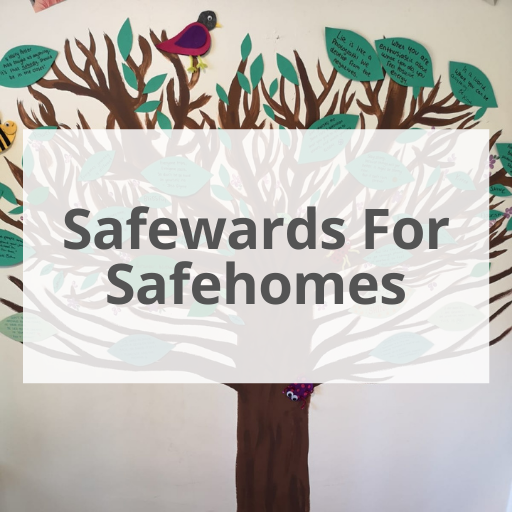14th Aug 2020
Safewards for Safehomes

We began implementing “Safewards for Safehomes” at Care in Mind in 2015, to support our ethos of least restrictive practice and working therapeutically to manage risk.
Our team worked alongside Professor Len Bowers of Safewards to adapt the ward-based model for our community setting. Working closely with Professor Bowers, we have been able to stay true to the original Safewards model. To our knowledge, we remain one of the only residential providers implementing the model within a community setting.
Safewards is an evidence-based model that is designed to reduce conflict and containment, traditionally on ward environments. This is achieved through ten key interventions that serve to improve the relationship between staff and young people thereby reducing conflict and containment. You can find out more about the model and interventions on the Safewards website.
We have found that the implementation of Safewards for Safehomes within our residential services has had an overwhelmingly positive impact. The model allows for a more therapeutic relationship between staff and young people. In fact, in many ways, it allows the young people in our care to see the staff as more human. It also complements other elements of our model of care, including the Boundary Seesaw model (Hamilton 2010). Staff and young people can enjoy a healthy, supportive relationship with clear boundaries in place to promote a safe, consistent environment.
Analysis of incident data shows us that the implementation of Safewards has had a significant impact on conflict reduction in homes. The clear structure of the model and the range of interventions provide a positive framework for our staff, which guides them through managing conflict. This allows them to react in the most helpful way, creating a more supportive environment. Young people are also encouraged through the model to develop responsibility for their actions and conduct.
The use of language has been key for us in applying the model to a community setting. For example, words like ‘ward’ or ‘patient’ don’t translate to our residential environment. Each of our homes is 4 or 5-bedded, so there are fewer discharges than a busy ward environment, which means fewer “Discharge Messages”. Therefore, we use “Positive Messages” instead. These might include song lyrics or quotes chosen by young people, as well as messages left by individuals who have left the service.
Each of our homes puts their own creative stamp on the interventions:
Some of the challenges we’ve encountered include consistency and ensuring the model is thoroughly understood. This is targeted through a strong focus on training, and the identification of Safewards Champions in each service and department. We also now implement Safewards for Safehomes workshops for our young people. Our Best Practice Facilitator, Dominique Hooper, has corporate responsibility for embedding Safewards. She supports our teams to think creatively about how the interventions can be applied in challenging situations.
Our ideas for further building on the ten key interventions include:
- Music and mood: thinking about the effects of music on mood and how we can use music to self-soothe or lower arousal and agitation
- Physical activity: considering the impact of being more physically active on our well-being
Overall, the process of embedding Safewards into our model of care at Care in Mind has been phenomenally positive. Implementation has been no mean feat, and the continuous development and improvement of the project is ever evolving. We have seen the benefits to the wellbeing of our staff and young people, as well as the dynamics between them. We find that it promotes kindness, respect, empathy and validation, all of which are core principles within our organisation.
For more information on Safewards, the ten key interventions and lots of other ideas you can visit the Safewards website or join the international Safewards community on Facebook.

